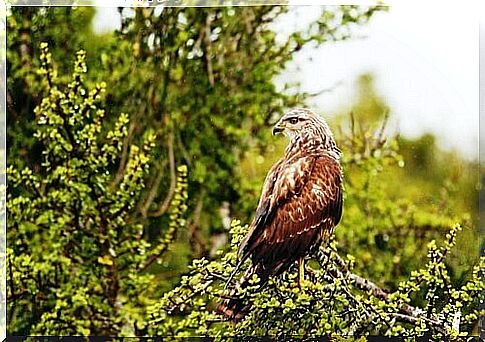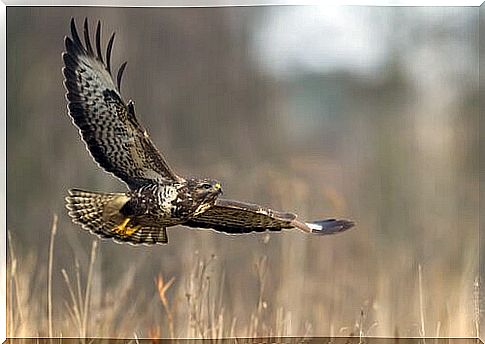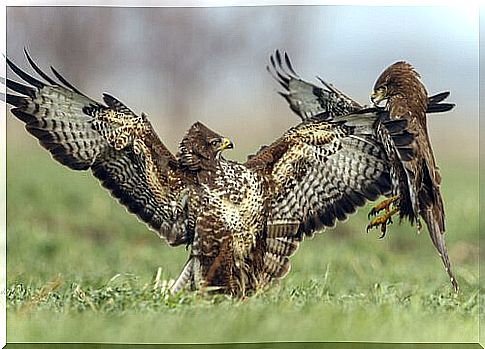Common Buzzard: Characteristics, Behavior And Habitat

The common buzzard, also known as bozzago or bozzargo (Buteo buteo) is the most common bird of prey in Europe. The buzzard has managed to ensure an incredible ecological success throughout history. To such an extent that, even today, it lives in most of continental Europe and in various areas of Asia. Let’s find out all its features in this article.
Characteristics of the common buzzard
The buzzard is a medium-sized bird of prey with a wingspan of 1.3 meters at maximum extension. When in flight, it is easy to recognize due to its characteristic short, fan-shaped tail. Its plumage is very varied: it can have many shades of brown with white grafts, especially inside the wings.
It is one of the most recognizable birds, difficult to confuse with other species such as the shod buzzard or the European harrier, with which it shares even only partially its habitat . Its flight is carried out on circular planes and gliding, and almost never performs aerial acrobatics like other species, for example the kite.

There are more than eight buzzard subspecies , due to their huge distribution area, although there are no major differences between them:
- Buteo buteo
- Insularum
- Harterti
- Buteo pojana (or Buzzard of Sardinia)
- Menetriesi
- Vulpinus
In the past, other species were included within the common buzzard family . Recently, however, the most distant varieties from Europe have been separated, as in the case of the Himalayan buzzard.
Behavior of the buzzard
They are territorial birds, especially during the mating season, and aerial fights between males are very frequent. They fiercely protect their nest. Courtship takes place at the end of winter, when couples perform synchronized circle flights and make louder sounds, before perching together on a nest.
Buzzards are solitary, but sometimes they come together to consume carrion. Situation that occurs, more frequently during the winter, due to the lack of prey. They form a kind of social group, with a well-defined hierarchy, regulated according to the law of the strongest. Some buzzards are migratory birds and it is possible to see flocks heading towards the coasts of North Africa.
Although it is a predator, the buzzard is often the victim of attacks by the eagle owl. Physically larger, this nocturnal animal occupies the same habitat as the Buteo buteo and is favored, in the fight, by greater prowess and a considerably wider wingspan.
As for the hunting technique, the buzzards are positioned high in order to control large areas of land. They launch the attack almost without fail, once they have identified the possible prey: moles, mice, rabbits, snakes or pigeons. Often and willingly they steal food from hawks, which are slightly smaller in size.

Habitat of the common buzzard
Buzzards live throughout Europe, except in the most inhospitable areas of Russia and the Scandinavian countries. It is also possible to see them in the Caucasus, Turkey and Iran. The territory of this bird extends to the border with Mongolia, and some of its populations migrate to the Middle East, India and Africa, and inhabit the Eurasian steppe for much of the year.
As for habitat , they usually choose areas bordering forests, to build nests and hunt more easily. They often frequent areas inhabited by man, near pastures or cultivated fields.
As we said earlier, the buzzard is a very widespread animal. Nonetheless, in some countries it has disappeared. As in the case of Ireland and Great Britain, due to indiscriminate hunting. Lately, the subspecies buteo insularum is in danger of extinction in the Canary Islands, Spain. In this case the reasons are related to the use of pesticides and electrical crop protection.









